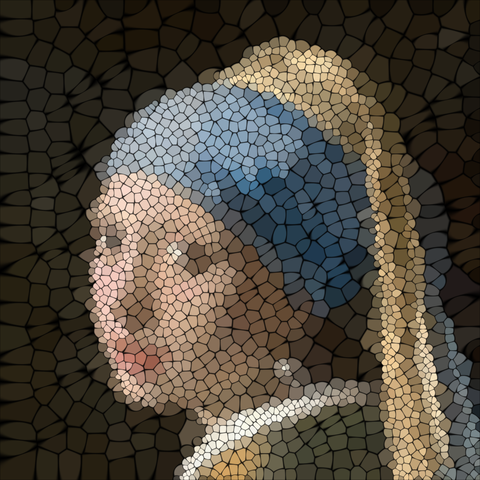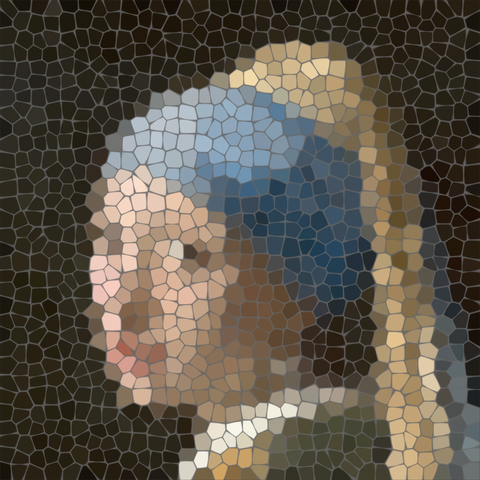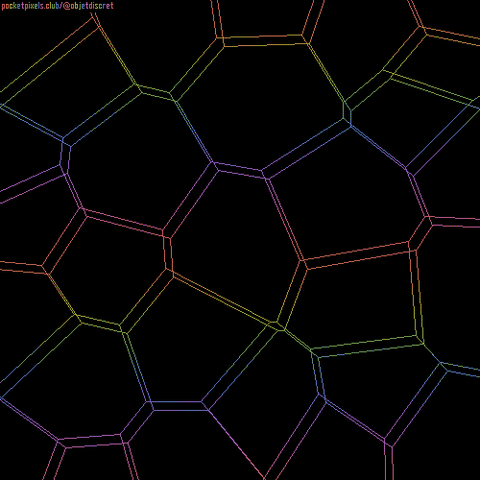Yet another optimized Voronoi tiling. This was supposed to be a simpler alternative to the previous tiling approach, but I ended up going down a rabbit hole of various dithering algorithms.
Instead of the equal-sum partitions, this uses regular dithering to find the Voronoi seed points, and the tile areas are inversely proportional to the colour values. My simple random dithering didn't work as well as expected, so I started to look into alternatives. I was of course aware of Floyd-Steinberg, and as I grew a bit tired of this demo, I ended up cheating a little by using a ready-made library. Since I was using PIL for image handling anyway, I could simply use its format conversion functions to get a 1-bit image, which uses F-S by default.
As before, I planned to use edge detection to get smaller tiles at the contrast edges. However, it didn't work so well with dithering, as it would concentrate basically all seed points at the edges. So here I used a mix of edge detection and the original. I think it worked out nicely here, as the bright colours often coincide with areas of small detail, while the dark background doesn't need much resolution.
#voronoidiagram #pixelart #blockart #tiling #raster #mosaic #pythoncode #opengl #algorithmicart #algorist #mathart #laskutaide #ittaide #kuavataide #iterati



